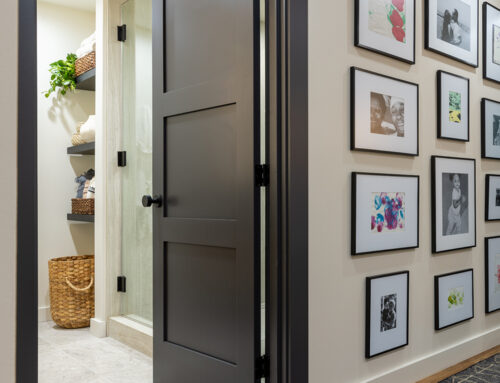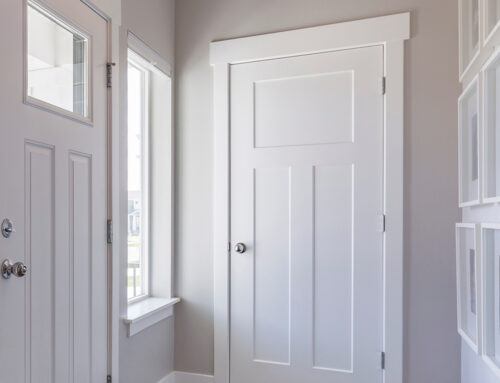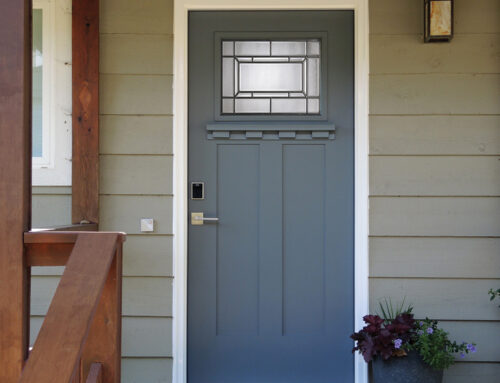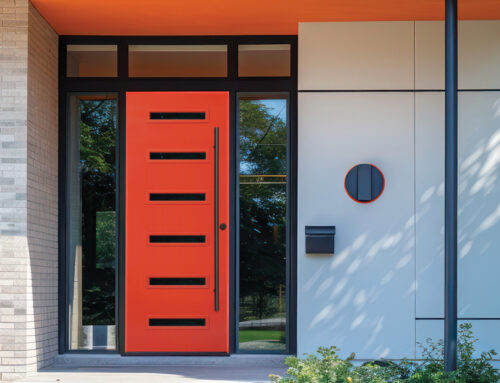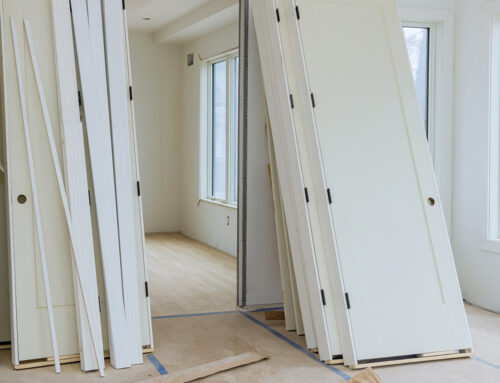Doors are something many people take for granted. They serve as ways to stop entry between areas, whether it is an exterior door which protects your home from the elements or uninvited guests, or interior doors which can offer privacy, or even just close off an area that isn’t in use. Here are some things to consider about interior and exterior doors before you start your next project. The two serve similar purposes, but are actually quite different.
About Interior and Exterior Doors
Not long ago, interior and exterior doors were virtually the same. Homes were often very drafty and required doors that were nearly as sturdy to separate rooms inside the house apart from each other as the doors on the outside of the house. Doors were also the first line of defense against people (or even animals) that tried to enter places they didn’t belong, often by force.
Both interior and exterior doors could be locked with the aid of a key, and provided adequate protection from forced entry as a way to provide security within the home. Today, times are a little different. Interior doors are usually more lightweight than exterior, not requiring as much security as what a room inside a castle or manor might require. They are often constructed of one main slab, which is constructed of a composite material or single material to save on weight and construction costs. Interior doors are often designed more with privacy in might as well as offering acoustic insulation or limited access. Interior doors are usually lockable from inside the room, allowing occupants privacy and discretion when the need arises, but lacking in nearly as much security as times past.
Exterior doors still serve the same purpose. They are a barrier between you and the outside world. Exterior doors are typically sturdier to thwart loss of heat or cool air in different seasons. They also serve as a line of security against outside forces. They deter intruders, terrible weather, animals, and also provide a little information about the character of the people living in the home. They are a line of defense, but also say something about the residents. Different styles, materials, and designs complement the architecture of the home and set it apart from the others in the neighborhood.
Door Anatomy
Knowing the different parts of a door can help you decide what you need for an area.
-
- Door slab: The main door itself. Interior doors are often just one slab (see corner sample to the right), while exterior doors are composed of sometimes several.
- Jambs: This is the area of the frame which prevents overtravel of the door. On exterior doors, it must be strong enough to resist impact as well as serve as a viable seal against the elements.
- Frame: This supports the door while closed and attaches to the rough opening of the room or house.
- Casing: This covers up the area where the frame is fixed to the studs of the walls. It is usually more ornate and further insulates, covering gaps between the frame and the studs.
- Hinges: Pivots which determine how and which way a door will swing. Doors typically swing inwards to entry. They can be ornate or very simple, but they always need to be strong enough to support the door they hold, as well as smoothly operate to allow for ease of entry as well as strength. They are also protected by being inside the room and protected from tampering.
- Lockset: This is the hardware that is used to lock the door. Some interior doors might not have a lockset, but almost all exterior doors do.
- Sticking: The machined inside of rails and stiles which hold door panels (or slab components) in place.
While some of the basic anatomy of both doors are the same, the exterior door has a few additional components.
- Panels: Wide, flat pieces, sometimes constructed of glass or beveled pieces, held in place by rails, stiles, and the mullion.
- Mullion: The center piece which runs vertically, supporting panels and connecting them to rails.
- Rails: The Horizontal pieces that make up the door slab.
- Stiles: The vertical pieces which run the length of the door slab.
- It is not uncommon for older interior doors to be constructed in this way.
Why Trimlite?
Trimlite has been bringing our customers extraordinary quality for interior and exterior doors since 1992. With decades of service to thousands of customers in four countries, we have a variety that is unmatched in the industry. We want to give you the best selection and craftsmanship to suit your budget as well as your aesthetic.
Shop Trimlite today and be inspired for your next project with these amazing doors!




